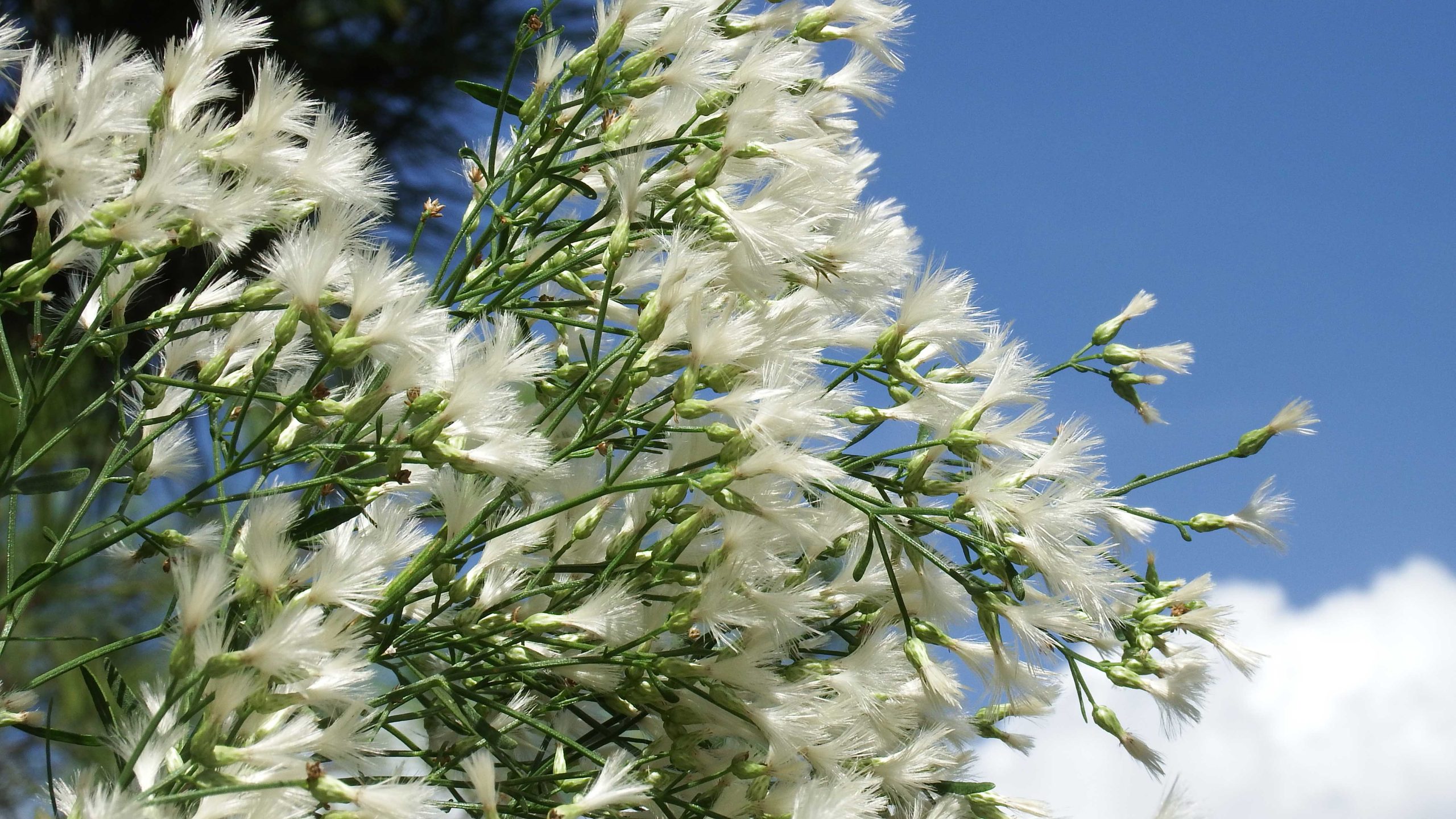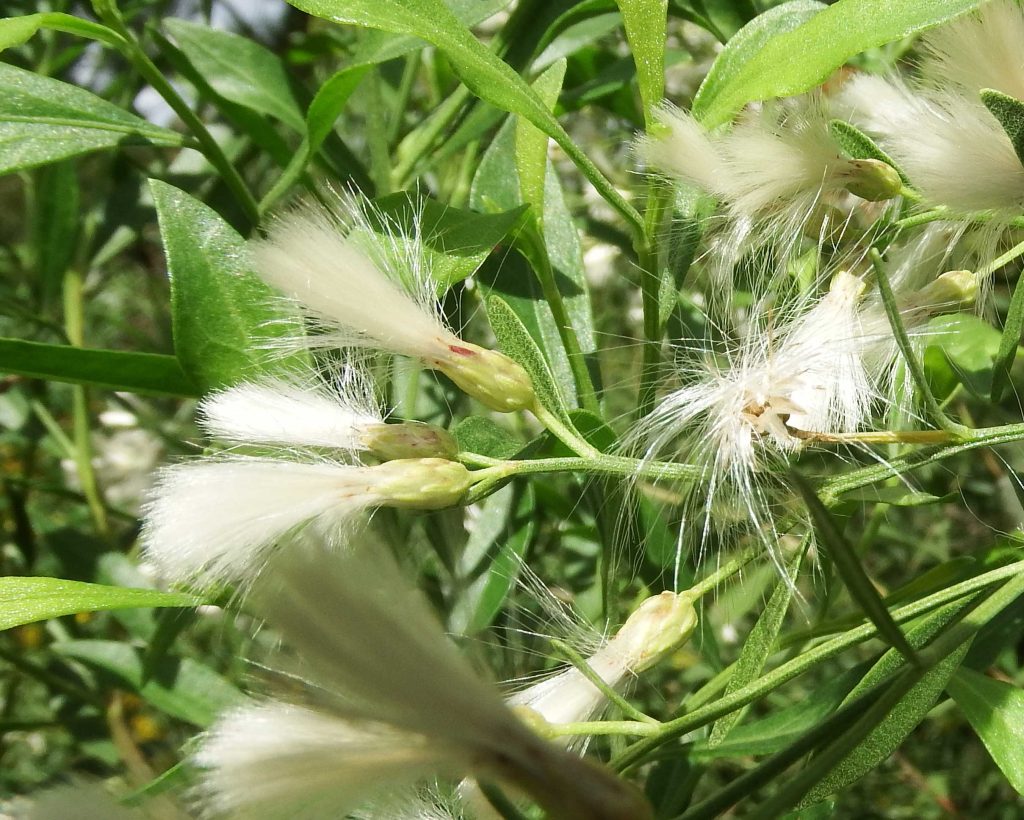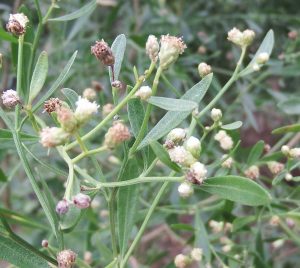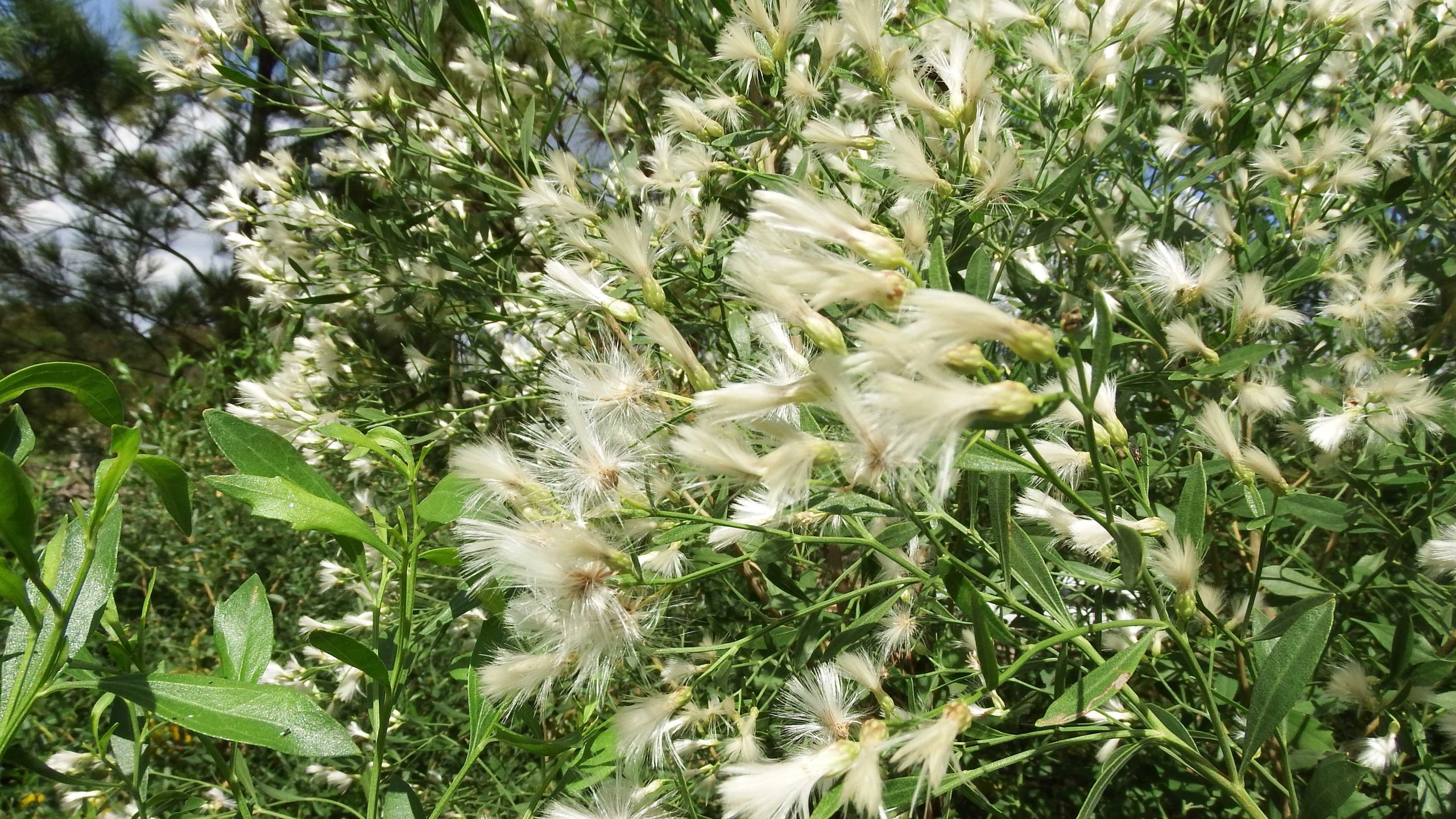Our Park is getting seedy!
 There is an eye-catching plant in our Park right now. Usually, when I post about an eye-catching plant, it is in glorious bloom. But in this case, the plant is in glorious seed. It bloomed months ago and I have to admit, I didn’t even notice.
There is an eye-catching plant in our Park right now. Usually, when I post about an eye-catching plant, it is in glorious bloom. But in this case, the plant is in glorious seed. It bloomed months ago and I have to admit, I didn’t even notice.
The plant is Baccharis halimifolia, its common names include groundsel tree, sea myrtle, saltbush, and consumption weed. Groundsel is a completely unremarkable plant winter, spring and summer. But, come fall, it puts on one heck of a show.
The seed heads that are so captivating right now are technically achenes, a feathery container for the seed within. Dandelions gone to seed are a more familiar example of an achene.

Groundsel achenes have a seed casing attached.
Groundsel flowers are quite insignificant, to us. I stress the to ‘us’ part because it would be unfair to dismiss them just because we don’t stop to admire them. Groundsel flowers are not overlooked by multitudes of bees, wasps, flies, flower beetles and ants. The proof of all that pollinator affection is the explosion of feathery seeds we are seeing in the Park right now.

These are groundsel flowers. I think these are female. Males flower earlier in the season and I couldn’t find any blooming in the Park right now.
Groundsel is unusual in being dioecious; there are male and female groundsel trees. The ones you will notice now are the females. The males don’t develop seeds. Dioecy is fairly rare in plants. Only about 7% utilize the strategy of placing male and female reproductive organs on separate plants. Humans use that strategy well over 99% of the time.
If 97% of all flowering plants have male and female sex organs in the same flower, it suggests that this was the preferable evolutionary strategy for reproduction. A species which has male pollen on one plant over here and female ovaries on another plant way over there have to work extra hard at attracting those highly mobile and picky pollinators. This may explain why Baccharis halimifolia is such a champ in this category.
The common name “groundsel” provides a hint about why you might not want this in your garden at home. “Groundsel” comes from the Anglo-Saxon groundeswelge, meaning “ground swallower.” It spreads that quickly. Because “groundsel” is a common name shared by a variety of plants that are unrelated, please pay attention to the Latin name Baccharis halimifolia. Some of the plants commonly referred to as groundsel are cited as being edible. Baccharis halimifolia is not. White-tailed deer are fond of it. Cattle reject it. It is toxic to us, although it has been used medicinally by some cultures. Note the common name “consumption weed” making reference, no doubt, to tuberculosis, once referred to as consumption.


